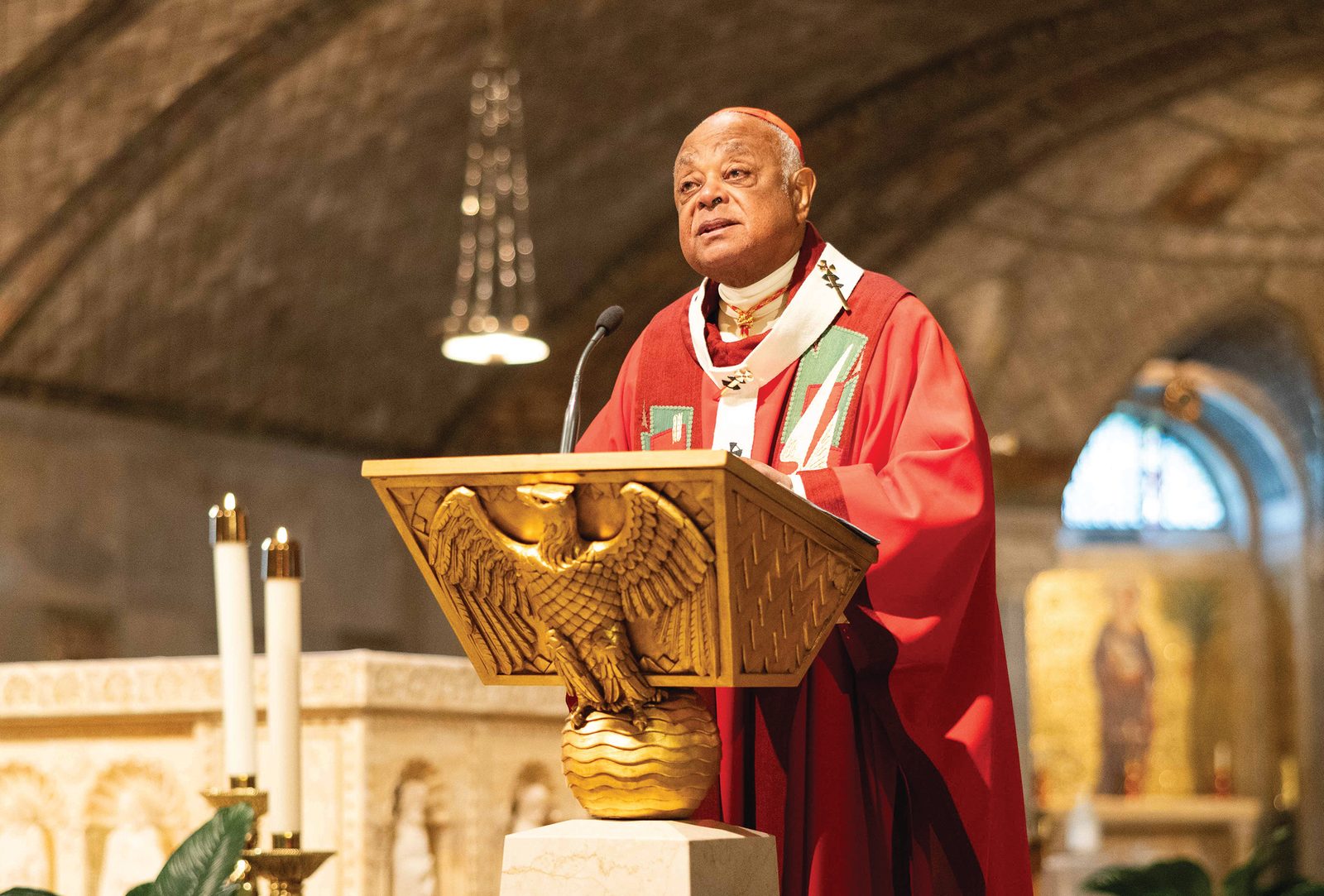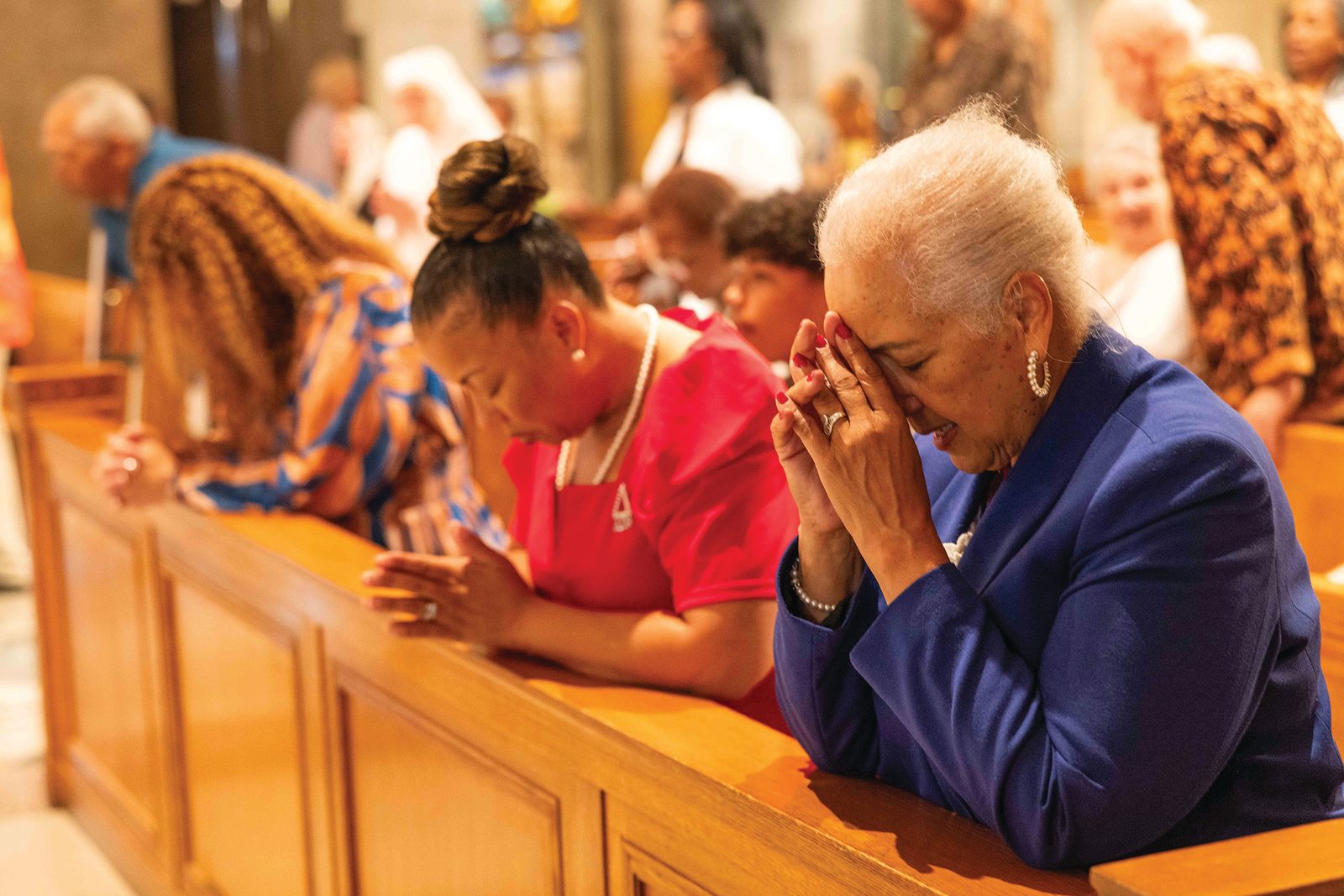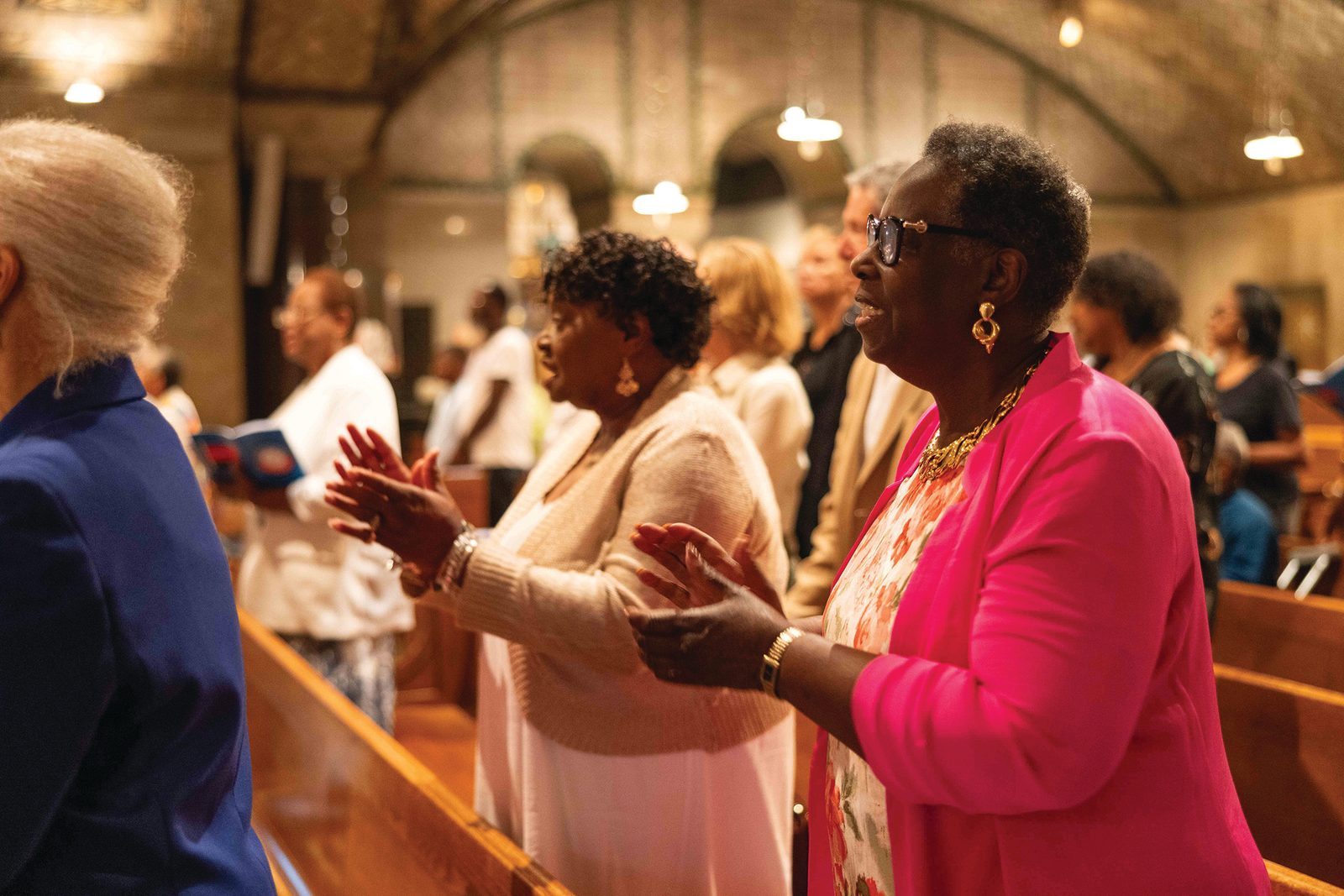During a Mass of Thanksgiving June 29 in the Crypt Church of the Basilica of the National Shrine of the Immaculate Conception, Cardinal Wilton Gregory, archbishop of Washington, celebrated the life and legacy of Father Clarence Rivers, whose faith and creativity transformed Catholic liturgy and sacred music in the early 1960s and continues to inspire today.
Father Rivers, an African American priest in the Archdiocese of Cincinnati, was a renowned artist and musical composer and a pioneer in Black Catholic liturgical music. He died in 2004.
At the Mass, Cardinal Gregory highlighted the 60th anniversary of two seminal events in the late priest’s mission to build a united, culturally inclusive Church: The impact of Father River’s American Mass Program and its debut at the first Catholic Mass offered in English in the United States after the Second Vatican Council.
In 1964, Father Rivers presented his American Mass Program of Afro-centric liturgy and hymns that blended the soul and rhythms of Negro Spirituals with Gregorian Chants to create what Cardinal Gregory called “the sacred music that emanates from the hearts and spirits of African-Americans…The words and melodies (that) belong to our heritage as much as does the color of our skin.”
“Clarence brought that special gift to the rituals of Catholicism and crafted ways to help them live together in mutual respect and affirmation,” the cardinal said.
In August of that same year, attendees at the annual meeting of the Liturgical Conference in St. Louis, heard Father Rivers lead the singing of his hymns at the first high Mass conducted in English in the U.S. Songs Included his signature hymn, God Is Love, his first composition for the liturgy.
Decades later in a memorial program for Father Rivers, Ken Canedo, a Filiipino-American liturgical composer, recalled that: “Electricity filled the air when Father Rivers stepped up to the microphone and sang… The American Catholic Church would never be the same.”
American Mass Program was the centerpiece of the celebration that Maxine Rivers, Father Rivers’s sister, coordinated with help from scores of his religious and lay admirers. Music was performed by the Archdiocese of Washington Gospel Mass Choir under music coordinator Rawn Harbor and directors Lynne’ Gray and Henry Herrera, representing the broad community of musicians and artists the priest mentored or continues to influence today.

Honorary hosts of the event were Anne and Frederick H. Brigham, Jr., Father William Cross and Francisca Sister Francesca Thompson. Washington Auxiliary Bishop Roy E. Campbell, Jr. concelebrated the Mass.
Maxine Rivers celebrated with her daughters Christa Caceres – who spoke on behalf of the family and attended with her 15-year-old son Josiah – and Sasha Harrison who came with her husband Keith Harrison and their children Hannah Marie Harrison, nine months old, and six-year- old Keith Harrison, Jr.
“Uncle” as my sister and I affectionately call him, was one of the few rare and anointed individuals in this lifetime who fully understood and was committed to his assignment,” Christa told the crowd, occasionally choking back tears. “Not only was he brilliant in the understanding of his assignment from the Lord, but he also made sure that his brilliance – his light from God – was never dimmed or diminished when surrounded by darkness.”
Though he never met his great-uncle, Josiah said the Mass “spiritually meant a lot to me” because “I feel his presence in the music and liturgy that has had such a big impact on the world and our family.”
“Clarence Rufus Joseph Rivers was indeed a force to be reckoned with,” Cardinal Gregory intoned as he extolled Father Rivers as “a genuine artist” whose gifts included musician, teacher, graphic and textile designer, and author.
“He was exactly what our Church needed even before the Church knew it needed him… Today, we gather to observe the 60th anniversary of his ground-breaking American Mass Program which reflected the sung spiritual heritage of African Americans and thrilled the hearts of those who first heard it.”
From its inception, American Mass Program attracted adherents in nearly every diocese in the United States and worldwide when the Catholic Mass was largely conducted in Latin and culturally Eurocentric.
The program was accepted in Africa, including South Africa, Australia, Canada, England, France, Ireland, Poland, and Switzerland, among other countries.
The United States Information Agency (USIA) featured it in its 1964 Polish edition of America Illustrated magazine.
Vatican Radio highlighted the recording, whose album cover reflects a united, worshipping Church of young and old of many cultures and colors; and the program was translated into German for the historic 950-year-old Mainz Catholic Cathedral in Mainz, Germany.
In 1966, the Catholic Art Association awarded Father Rivers its annual Gold Medal for American Mass Program “showing the way to whole-hearted song in traditional Christian worship and for being a genuine expression of the people of God on American soil.”


Along with his artistry, Father Rivers was “first, and foremost, a Catholic priest and inspired evangelizer,” Cardinal Gregory said in his homily that commemorated the Solemnity of Saints Peter and Paul, and aligned Father Rivers with these forerunners of evangelization.
Father Rivers “suffered often for his imagination,” Cardinal Gregory said, as did Peter and Paul, to “bring into a single community” Jews, Greeks, Romans, “and those coming from other Mediterranean and African cultures… Our Church has always struggled with the challenges associated with being a welcoming Church – a truly Catholic Church. Clarence knew this firsthand.”
Born in Selma, Alabama on Sept. 9, 1931, Clarence Rivers was the eldest of three children born to Clarence Sr. and Lorraine Echols Rivers. The family of non-Catholics migrated to Cincinnati, Ohio where Clarence attended Catholic school. The family converted to Catholicism, and in 1956 Clarence became the first African-American priest ordained in the 150-year history of the Cincinnati Archdiocese.
“Perhaps the most painful encounter that Clarence had to encounter came from some African-American Catholics who had lost—or perhaps never actually possessed – a positive esteem for their own culture,” the cardinal related. “How often would he hear from Black Catholics that the spiritual music of our people did not belong in Catholic rituals? (They said) we left that when we became Catholics!”
However, Father Rivers saw African-American heritage and spirituality as assets that blended harmoniously with the faith and cultures of other Catholic and Christian brethren. Later as head of the National Office of Black Catholics’ new Department of Culture and Worship, he created an annual workshop on African-American liturgy called “Freeing the Spirit” and edited a magazine of the same title to promote workshop objectives.
Artistic inspirations included the Missa Luba Mass; Sister Mary Elaine Gentemann, a Sister of Divine Providence and music teacher from Texas, credited in 1945 with creating the first Mass to include Negro spirituals; Belgian Norbetine monk and liturgist Father Boniface Lukyx; Sisters of Saint Francis of Oldenburg; Catholic leaders, choir masters, and music students he worked with as pastor of the St. Joseph Catholic Church in Cincinnati, and many others throughout Ohio, the United States and the world who affirmed the musicality of his soul and captured his spiritual vision for the Church.
“Clarence liked to quote a statement from an unknown and unnamed Black preacher which serves now as a fitting conclusion to this tribute to Clarence Rufus Joseph Rivers,” the cardinal said:
“We ain’t what we want to be.
“We ain’t what we gonna be.
“We ain’t what we ought to be.
“But thank God we ain’t what we was!”














